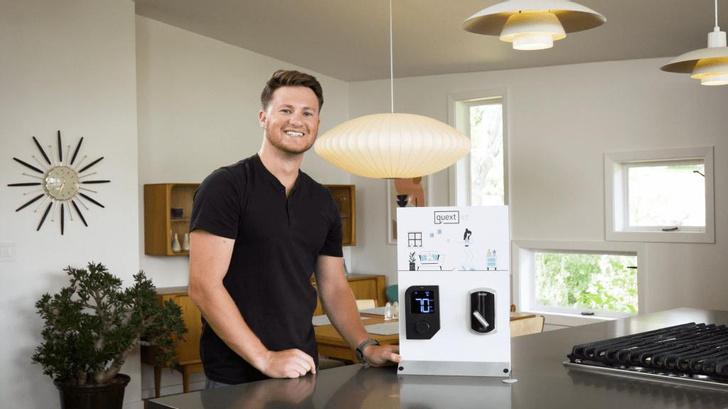With SmartRent going public last month, the acquisition last year of Stratis by RealPages, and an increased focus on implementing smart home features across a portfolio of rental units, multifamily IoT is having a moment. That is why I was intrigued to talk to Tray Johnson, VP of innovation at Quext, which has introduced an IoT product for multifamily communities.
Unlike some of the other offerings, Quext has selected LoRaWAN networks for the network coverage of its devices. So far, the company offers a smart home hub situated in a thermostat and smart locks from Allegion/Schlage. But Johnson said Quext plans to add leak sensors next, as well as additional devices to meet market demand. (For those that are interested, I also liked this site covering its AWS architecture.)

Quext was formed in 2017 by former apartment community operators from Madera Residential with a focus on modernizing apartment communities. It offers connectivity services and website management, and now will provide several smart home services for apartments. It also includes some notable players from the multifamily industry on both its advisory board and leadership team.
When thinking about adding connected devices to apartments one of the biggest challenges has to do with network connectivity and managing what might be hundreds of smart home hubs. When a rental unit is empty it doesn’t have broadband, which means that any smart device reliant on connectivity won’t work. Unless the building or unit owner wants to pay for continuous broadband service, the value that a collection of connected devices can provide to an empty unit is limited.
Each vendor handles this challenge differently. Stratis hooked up its communities with property-wide Wi-Fi networks that covered the units even when unoccupied and kept the smart home devices on that network. Other providers, such as PointCentral, use cellular to keep devices connected when a renter’s network isn’t operating. Quext has chosen LoRaWAN and worked with Semtech to get devices that can connect to LoRa and Wi-Fi networks. Quext designed its thermostat/hub to provide the link between the devices and LoRa network coverage that Quext sets up and manages for a property.
So far, Quext has four properties beta testing its service. The property owners buy the devices for their units from Quext and then pay $4 a month for service. Today those services include smart locks and thermostat control since those are the easiest use cases to justify.
The ability to get rid of keys, provide unguided tours, and manage the heat and AC in vacant units provides a clear return on investment that has encouraged property owners to invest in these devices and services. Johnson expects leak detection to be the next offering that apartment managers will demand.
I’m a little bummed about that, since I have been hearing about remote key management and controlling HVAC in multifamily dwellings for the last five years. I’m eager for apartment managers to embrace something new. I get that smart lights are probably not a huge money-saver (plus installation is pretty intense), yet I keep hoping to see something for noise detection in hallways, or people-counting sensors in public areas that tell residents if the laundry room is free or the pool is crowded. But so far, we’re still stuck with smart locks and thermostats.
As boring as those offerings are, I suppose it’s good that we have another entrant in the market ready to try a new connectivity technology in the multifamily space. This could be a boost for LoRAWAN networks and maybe the beginning of new services for apartment dwellers.
